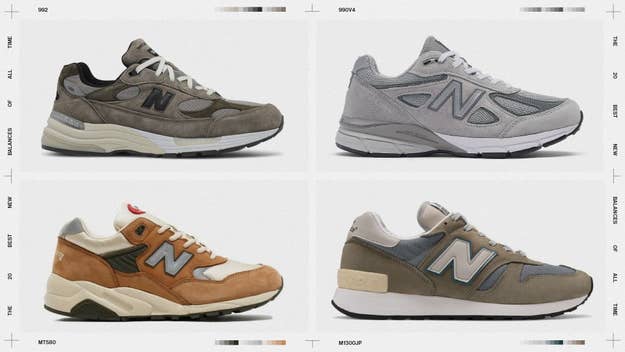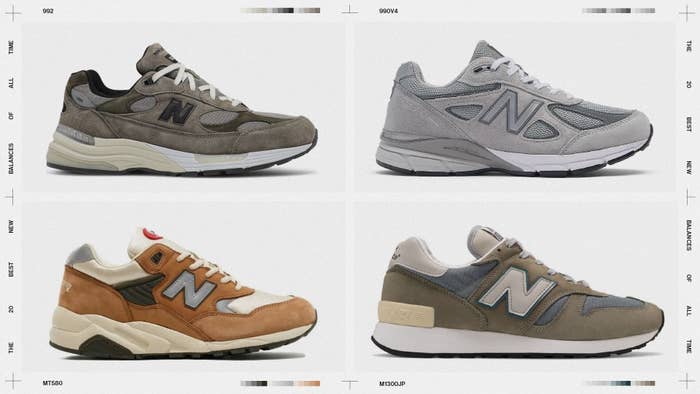
At this point, it’s an understatement to say New Balance is “having a moment”; the Boston-based brand is clearly here to stay. Over the last several years, the privately held company has positioned itself as a major player in the athletic footwear space, a move spurred by a perpetual string of “it” collaborators.
The brand’s energy had been bubbling for some time, but it was All-Star Weekend 2020’s “No Emotions Are Emotions” project with Chicago designer Joe Freshgoods that really elevated New Balance’s hype in sneaker circles. The Joe Freshgoods 992s had people lined up around the block — a queue that even rivaled releases from bigger brands like Jordan and Adidas — and kicked off a wave of projects that have continually upped the brand’s name value. There were Salehe Bembury’s colorful, often experimental designs. There was beauty in simplicity courtesy of JJJJound. And you can’t talk about the brand these days without tipping your hat to Aimé Leon Dore founder Teddy Santis, who became creative director of New Balance’s Made in USA line in 2021.
This collaborator-led strategy paid off and has seen interest trickle down to some of New Balance’s more accessible offerings like the 2002R “Refined Future Pack” (or, as the internet has coined it, “Protection Pack”), the 1906R, and general release colorways of the 550, a model first revived by Santis’ Aimé Leon Dore label in 2020. The 992 was everywhere during the pandemic, and the brand’s recent focus on the 990 line has found fans amongst a new generation of sneaker buyers.
With all the buzz around New Balance, there are plenty of takes about which of its sneakers are the best, but what defines that? You can’t truly explore the brand’s history by rattling off its current popular models and leaving it at that. To come up with a definitive ranking, we considered each sneaker’s place in New Balance’s history, its prominence throughout the years, and its level of appeal to today’s sneaker consumer. These are the 20 Best New Balances of All Time.
20. New Balance 320
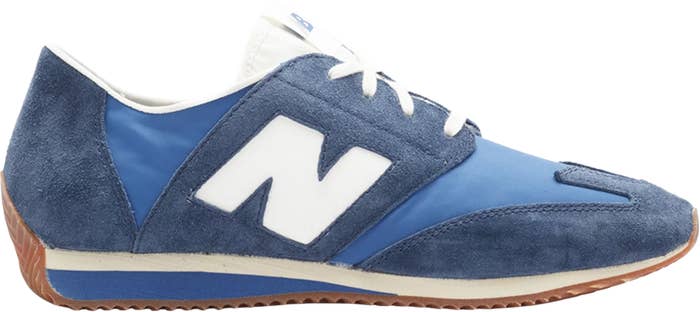
First Year Released: 1978
Where to Buy It: N/A
Many reading this might be new to New Balance. Their history with the brand might have started with a 990v5, a 550, a 327, a 9060, or a 2002R. But none of those sneakers would have been possible without the 320. It’s not New Balance’s first sneaker — that was the Trackster from 1967 — but the 320 was the first shoe that launched New Balance into the pop-cultural consciousness. The 320 looked like how you’d expect a running shoe from 1978 to look: gum sole, nylon and suede upper. Blue and white. The color of the shoes were bold though. And the ads for them were even bolder. They may look familiar, as they’ve been referenced by Teddy Santis and Aimé Leon Dore, but they feature an old man and woman. They are both carrying bags of groceries, the man with a cigar and newspaper. The tag line reads, “When the going gets tough, the tough gets going.” The 320 informed the design of the 327, a sneaker that saw much more mainstream appeal for New Balance than its predecessor ever did. But without this shoe, we wouldn’t be here talking about any of this anyway. —Matt Welty
19. New Balance 801
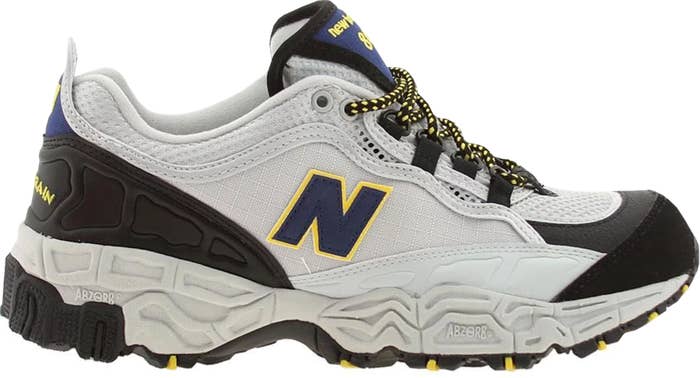
First Year Released: 1998
Where to Buy It: StockX
1998’s New Balance 801 was a lot of shoe. It had a chunky, geometric midsole long before dad sneakers became a trend, and was equipped for all-terrain scenarios while still doubling as a lifestyle shoe. While some people were hiking in their pairs, others were wearing them to get from class to class on campus — or flexing on magazine covers. Stephon Marbury donned a pair on the front of January ‘99’s fifth anniversary issue of Slam. Another one of the shoe’s fondly remembered moments (albeit obscure) was its appearance on rock band Saves the Day’s 1999 album cover for Through Being Cool. Years later, reissues of the shoe would also prove successful, and it’s been given everything from rugged Gore-Tex treatments to limited-edition collabs. But the best thing about the 801 may be its accessibility and affordable retail price of just $100, which is considerably lower than a lot of pairs on this list. —Riley Jones
18. New Balance 1600
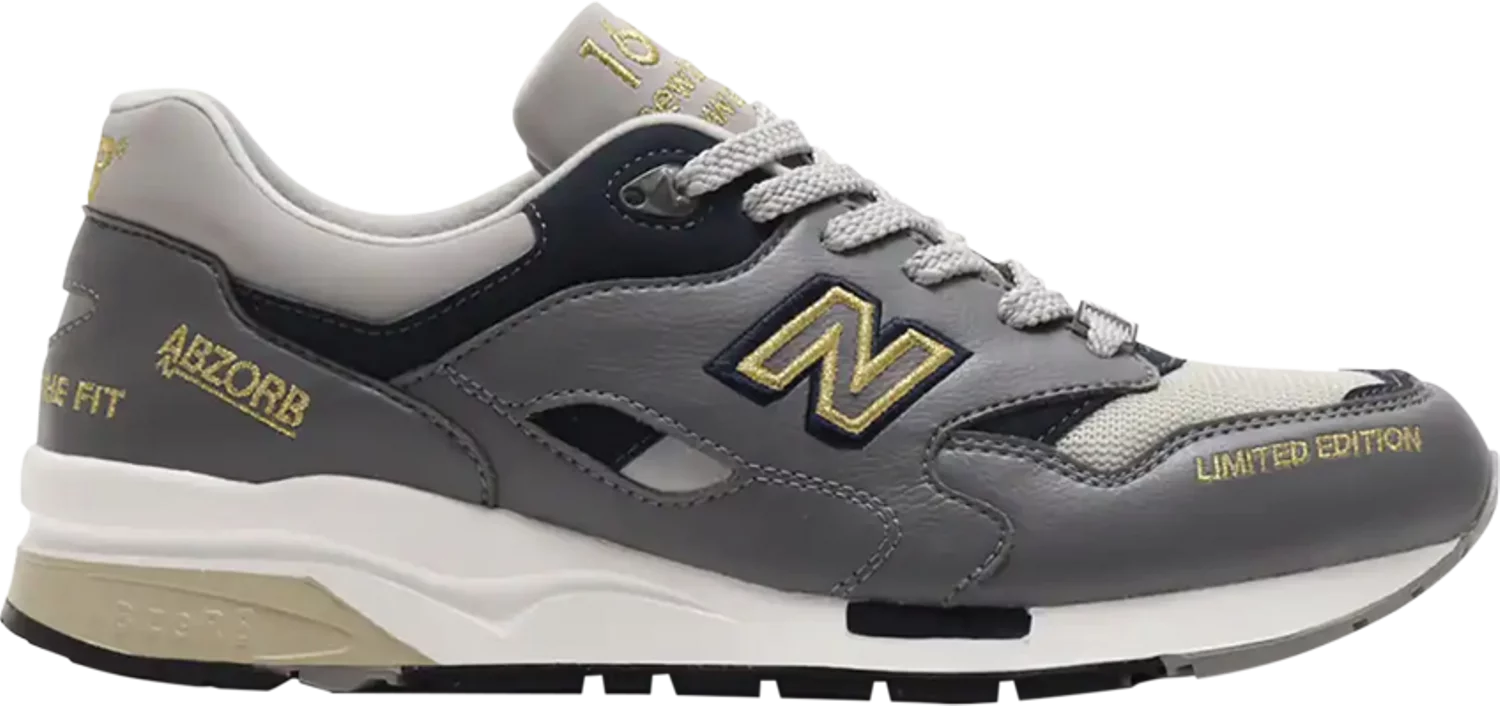
First Year Released: 1999
Where to Buy It: StockX
The 1600 is one of those weird middle-child models from New Balance, falling somewhere between the angular, small-N classic that was the 1500 and the more rounded 1700. It comes with Abzorb cushioning and has been remade by the likes of Ronnie Fieg and Ubiq for pairs that were reasonably well received in their day. It’s a fine sneaker but one that has never had an extended moment to really shine with big collaborations or memorable colorways. And while it has had its scattered hits, it’s hard to rank the shoe too high, given that the best-ever versions of the 1600 — that trio of pairs designed by Frank the Butcher from 2012 — never actually released. —Brendan Dunne
17. New Balance 999
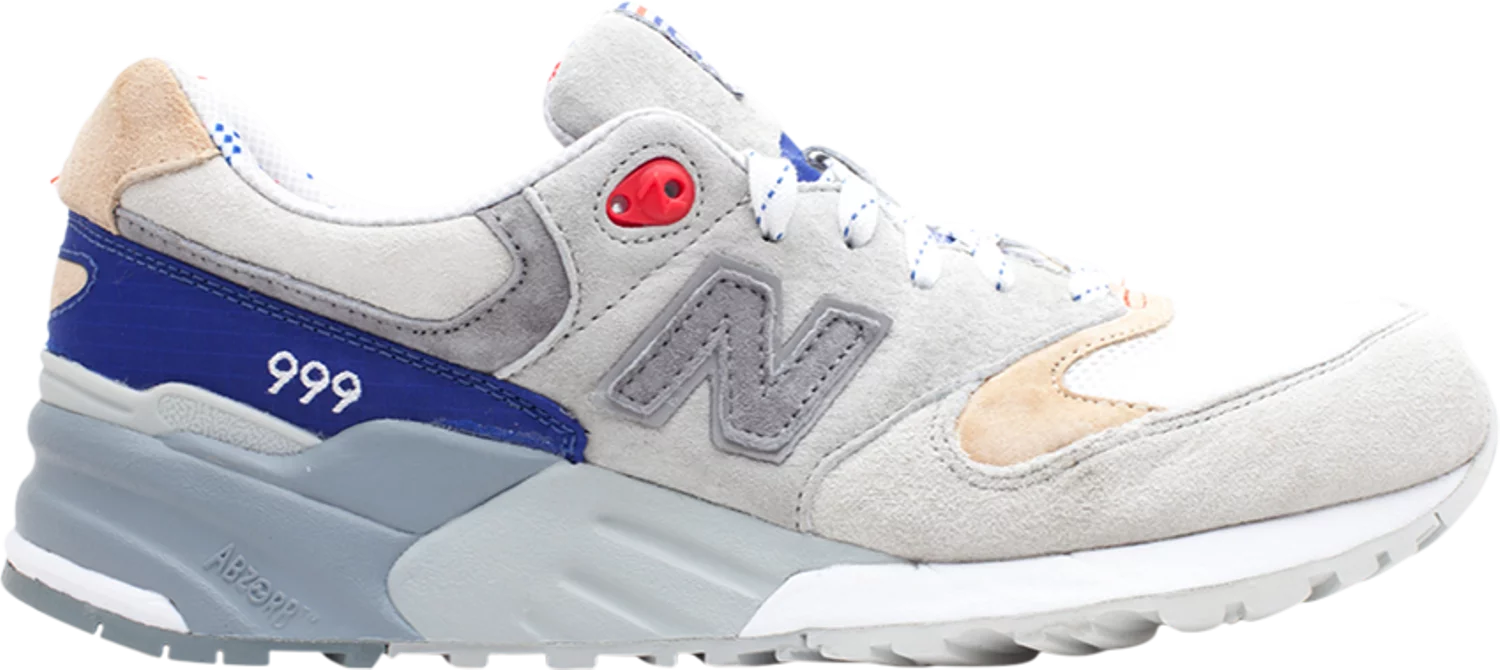
First Year Released: 1996
Where to Buy It: StockX
The New Balance 999 originally dropped in 1996, sandwiched in the beloved 99x series between ’93’s 998 and ’98’s 990v2. Like the rest of New Balance’s entries into the series, the 999 was, at the time, its most technologically advanced offering. Here, the brand reworked the midsole of the 998 to make it even cushier and chunkier, making the most of the Abzorb cushioning created in partnership with Dupont in ’93.
Like many of the shoes on this list, the 999 debuted as a performance runner but later found popularity as a lifestyle shoe, thanks in part to its collaborations. Notable pairs include Concepts’ “Kennedy” (later renamed “Hyannis”) and “SEAL,” as well as Kith’s “Steel Blue” rendition. —Riley Jones
16. New Balance 577
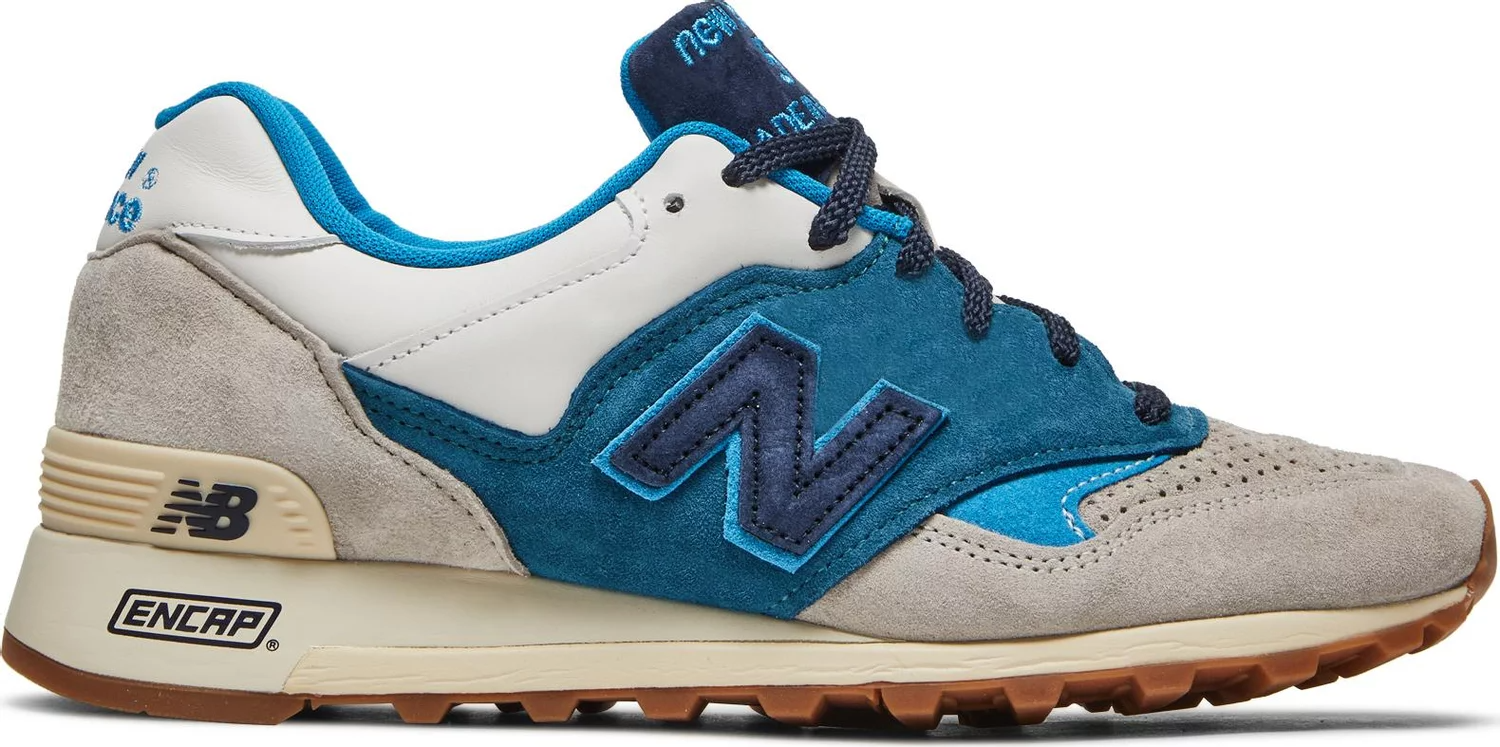
First Year Released: 1989
Where to Buy It: StockX
The 577 is like a 576 but way sleeker. First released in 1989, the sneaker is important to the brand for a handful of reasons. First, it’s been made at the brand’s Flimby factory in England since its inception, although early on some pairs were produced in America and a handful have been made in Asia. It also became one of the first grails for New Balance collectors, long before the brand was issuing limited-edition collaborations. In the 1990s, the brand made a special edition of the sneaker, in black and grey, for the Israel Defense Forces, which had collectors going to long lengths to track down the sneakers. In the 2000s, the 577 shifted to collaborations with the likes of Hanon and Sneakersnstuff, both of which got to rework the sneaker again in 2019. The most covetable 577 project, perhaps, came from the most unknown of the bunch, LFSTL. The shop, which is located in Rotterdam, Netherlands, made a pair in 2008 called the “Kakkerlak,” which means cockroach in Dutch, and became a status symbol amongst collectors that had a pair. Still, it’s hard to beat just the original grey and blue colorway of the shoe. —Matt Welty
15. New Balance 550
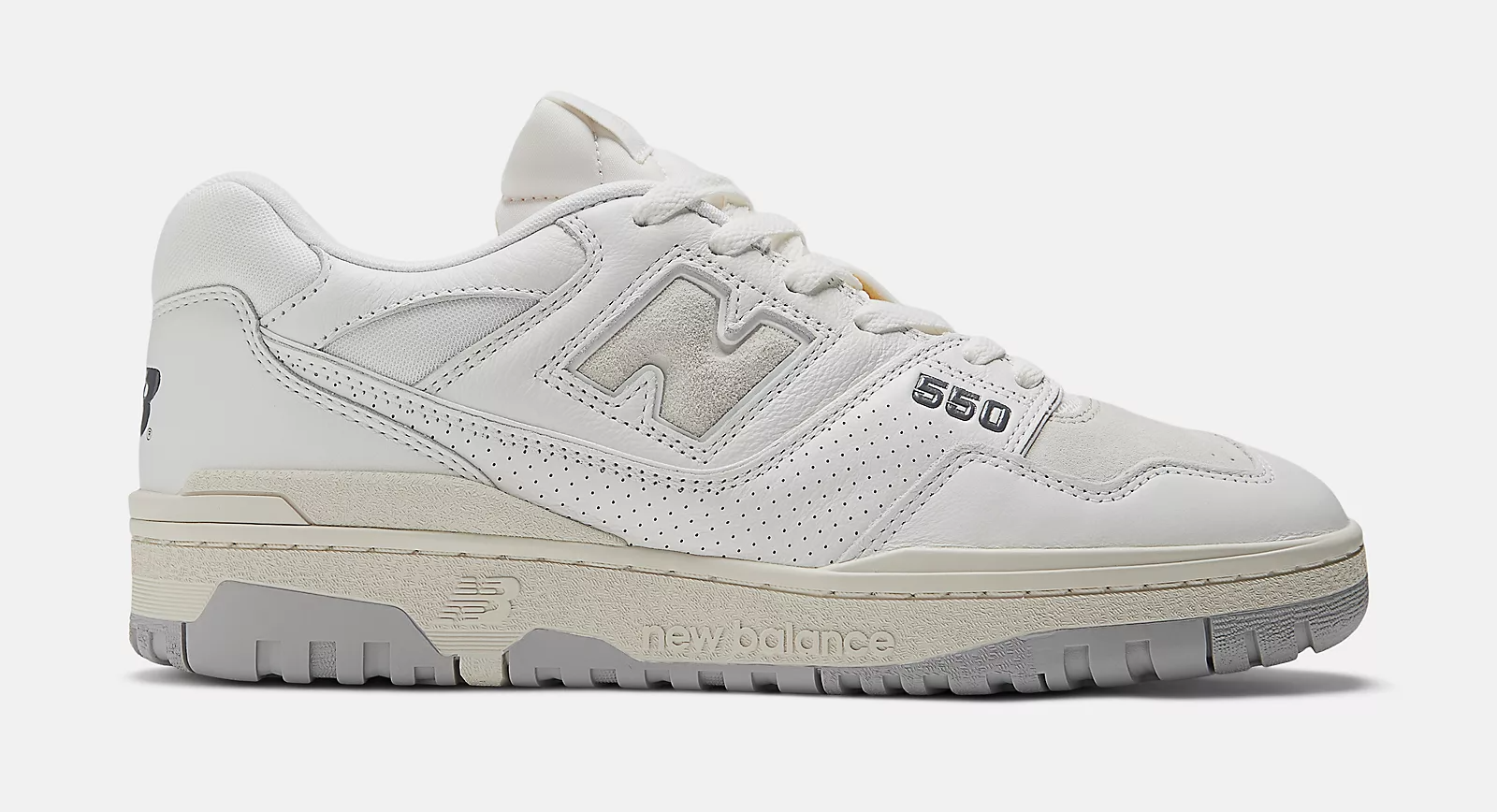
First Year Released: 1989
Where to Buy It: StockX
If there’s one singular sneaker that represents modern New Balance, it’s arguably the 550. Love it or hate it, the retro hoop sneaker turned “cool guy” accessory has done wonders to create energy around the brand. It was designed by Steven Smith and originally released in 1989, although at the time it was overlooked for the more heavily favored 650 high-top. These days, the low-top, late ‘80s hoops look has become so popular that it’s near the point of oversaturation. Part of the 550’s success has to be chalked up to New Balance’s strategic rollout, led by a handful of tasteful Aimé Leon Dore colorways that were eventually followed by a flood of general releases that people remained thirsty for. It’s a formula all brands attempt — introducing a model with a limited edition before releasing more accessible alternatives — but you’ll be hard-pressed to find a better example of it working as handsomely as it did here. —Riley Jones
14. New Balance 990v1
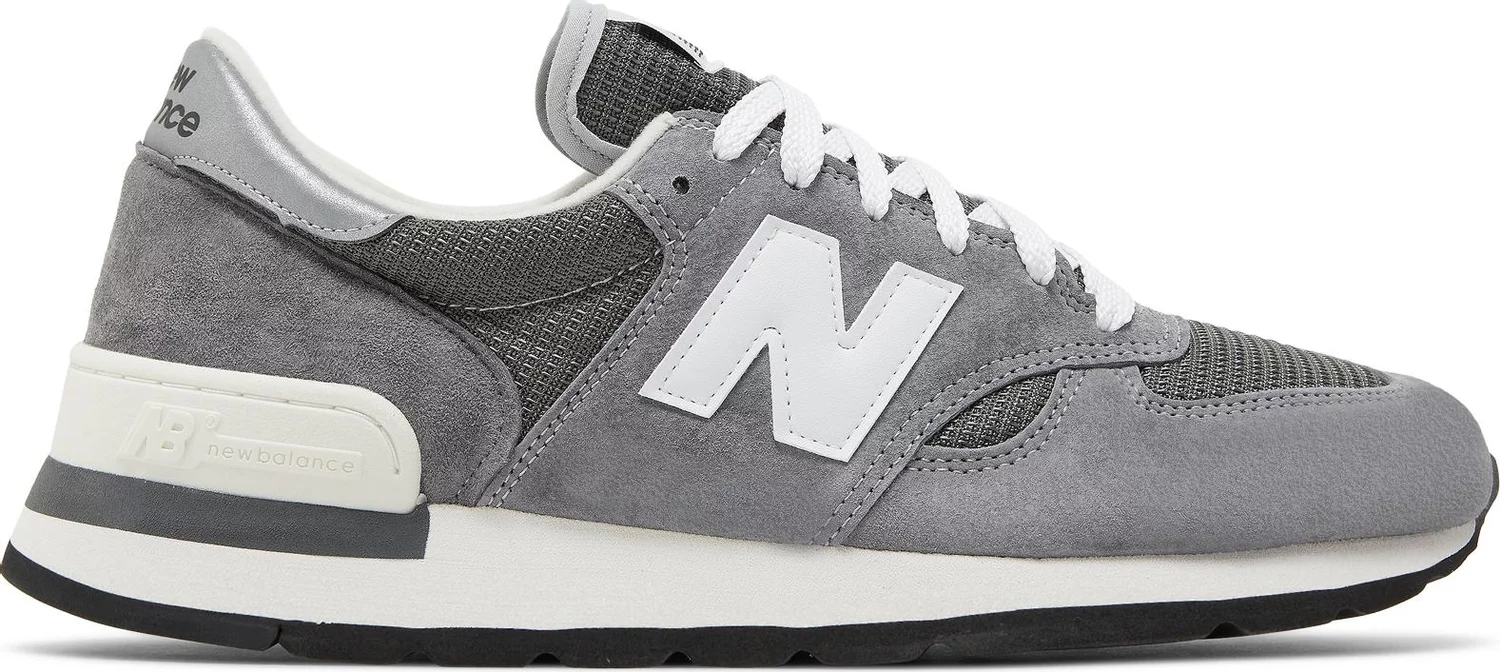
First Year Released: 1982
Where to Buy It: Ssense
This was the first sneaker to retail for $100. In 1982, a Benjamin Franklin was worth $303 with today’s inflation. That’s how much the New Balance 990 went for back then. The sneaker, now referred to as the 990v1 in modern times, was the first in New Balance’s now-long legacy of its grey suede shoes. The original dad shoe. The 990’s price point and comfort made it a mainstay amongst hustlers in Washington, D.C. and the extended DMV area. It was not only a status symbol, but a functional shoe for those who may have had to stand on their feet all day or run away from precarious situations. The model would birth the brand’s long-standing fandom in the region that continues to this day. Not only was it comfortable and coveted, but it also matched the gray Georgetown gear that people would have worn in D.C. at the time. While it’s currently the least en vogue out of all the 990 models (its appearance is much simpler and not as chunky), it still gets reissued and is still Made in USA like it was over 40 years ago. —Matt Welty
13. New Balance 2002R
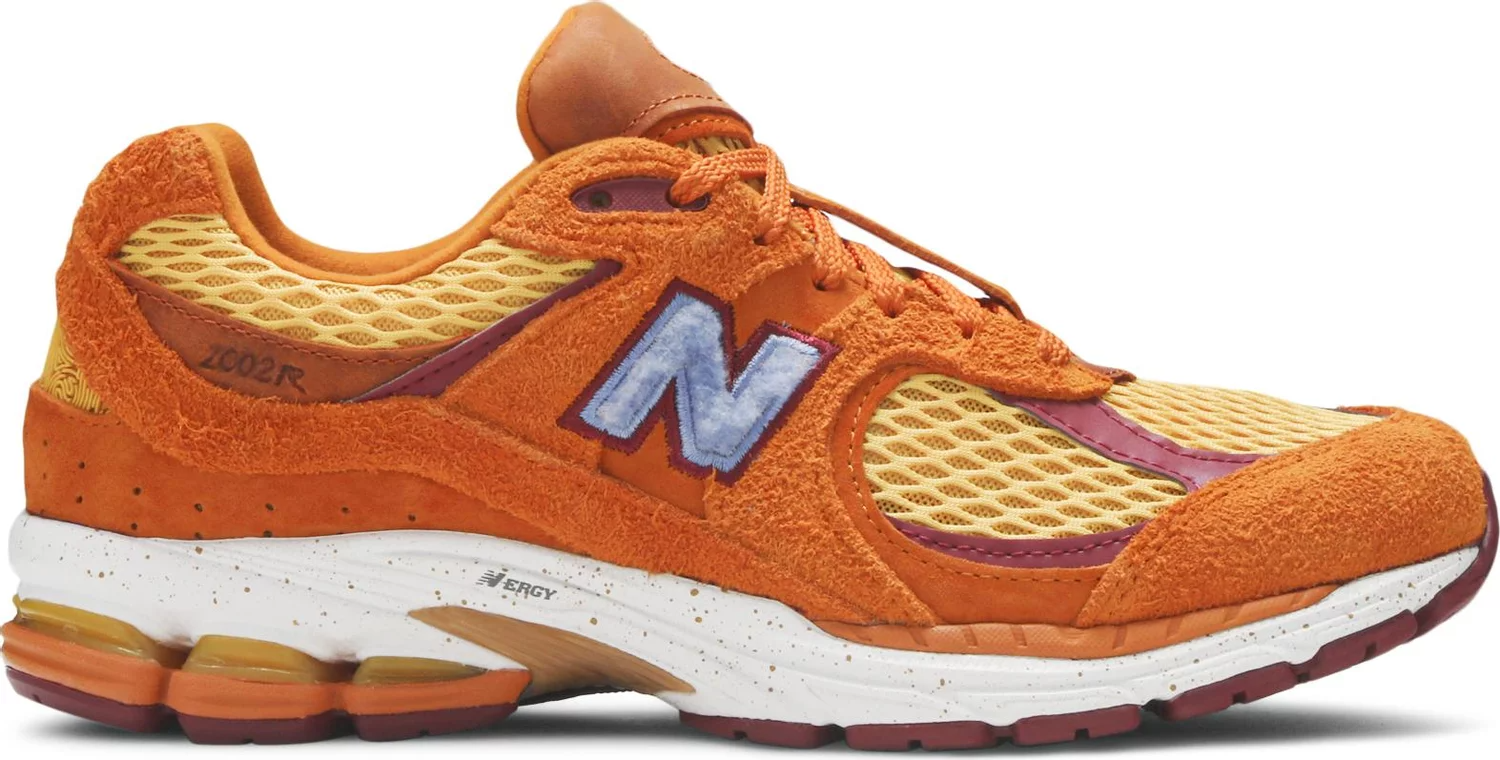
First Year Released: 2020
Where to Buy It: New Balance
The 2002R is one of those rare cases where remixing an OG may have turned out even better than the original. It was introduced in late 2020 as a rework of 2010’s MR2002, a runner that was high-end (even by 2010 standards) at a retail price of $250. For the return 10 years later, New Balance opted to save some cash by lifting the midsole from an already existing retro, the 860v2, and creating the revamped 2002R. The result is a shoe that is far friendlier on customers’ pockets, as 2002R general releases are priced at $140. The 2002R got a big boost early on thanks to Salehe Bembury’s “Peace Be the Journey” collaboration in October 2020, and the brand was able to continue the momentum with a number of special makeups as well as the successful in-house “Refined Future” (aka “Protection Pack”) collection created by New Balance designer Yue Wu. As far as which New Balances you are most likely to see in the street in 2023, the 2002R is right up there near the top. —Riley Jones
12. New Balance 990v2
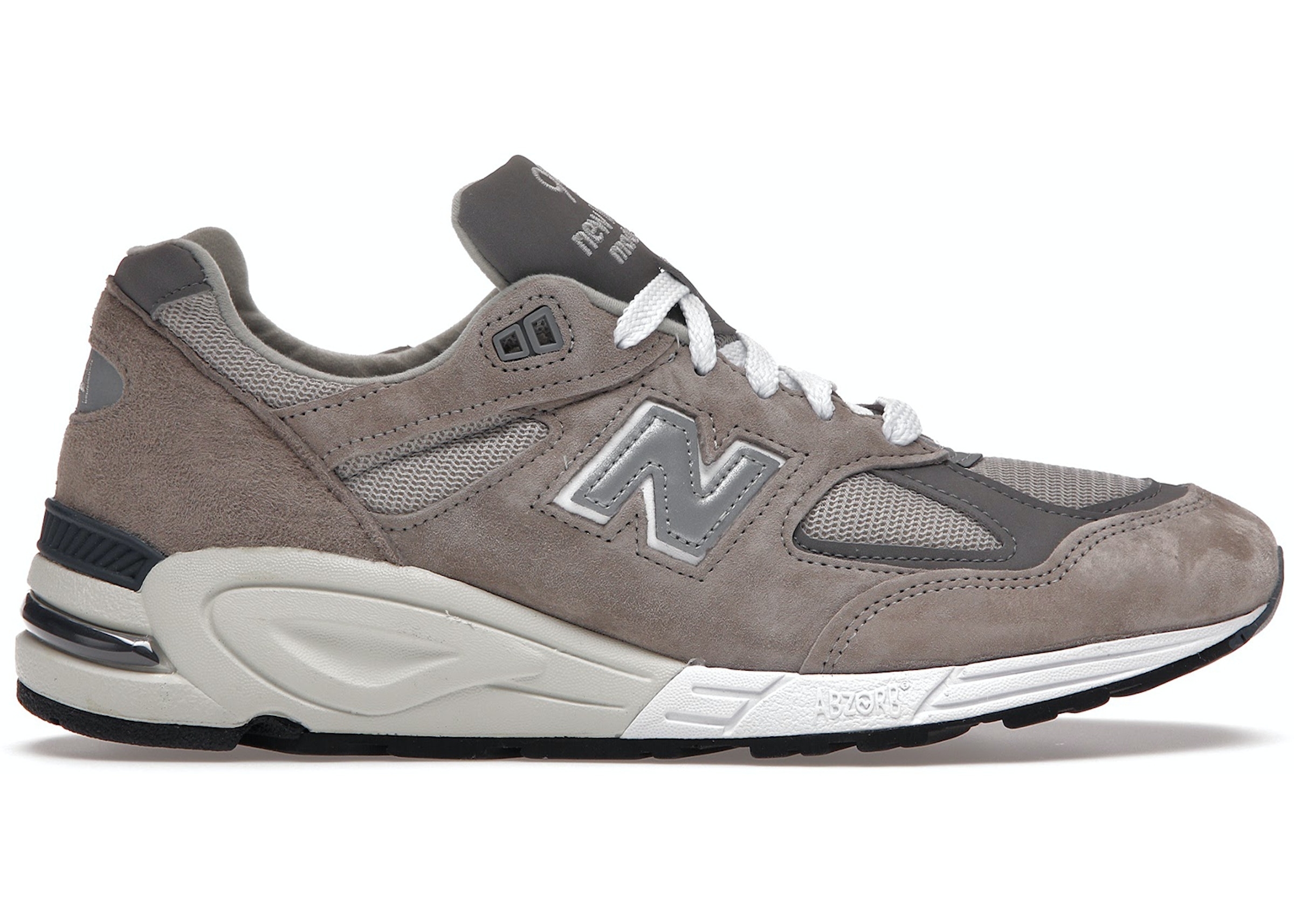
First Year Released: 1998
Where to Buy It: Bodega
How rarely is a sequel better than the original? We won’t blame any traditionalists who still hold the original 990 dearer than any of the subsequent versions of the shoe, but even that crowd can’t deny how important the 990v2 was in establishing a new formula for New Balance when it came to evolving existing designs.
Sixteen years after the 1982 debut of the New Balance 990 came the New Balance 990v2, a sneaker that looked much more millennial, featured a new cushioning system with its generous Abzorb, and gave New Balance a strategy where existing shoes could be iterated and tweaked across the decades. (Because of that precedent, the 990 has become a powerhouse franchise that’s still arriving in new editions on a regular cadence.) And 20 years from its own debut, the 990v2 is still a relevant shoe, its significance boosted recently by Aimé Leon Dore’s association with the model and Salehe Bembury’s colorful reworkings. —Brendan Dunne
11. New Balance 1300
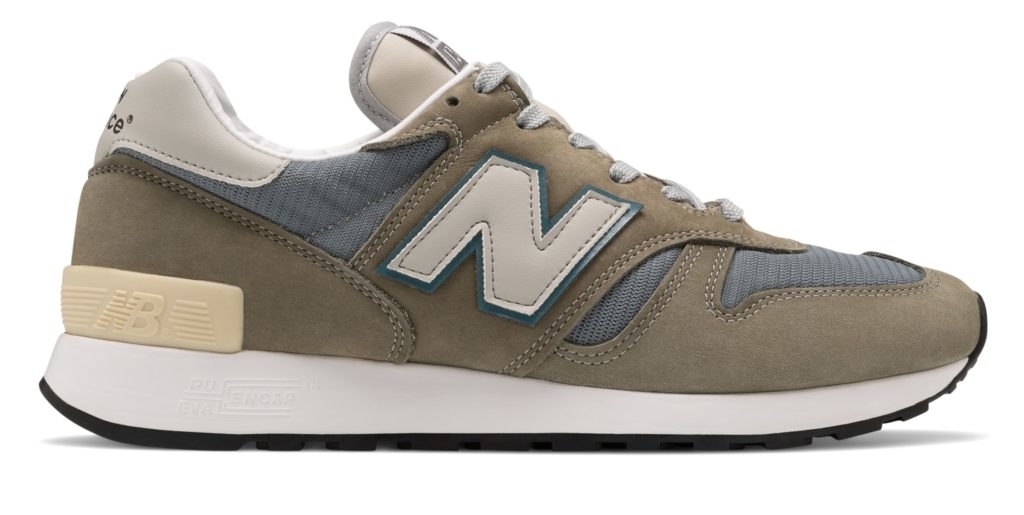
First Year Released: 1985
Where to Buy It: StockX
If you wanted a pair of New Balance 1300s when the sneaker first released in 1985, the brand’s advice was to “mortgage the house.” It was one of a handful of 1980s NB sneakers that derived its allure from its status as a near-luxury item; the New Balance 1300 retailed for $130 back in the ‘80s. New Balance was confident enough about the shoe to describe it in its ad campaigns as “the very best running shoe ever made.” That claim doesn’t exactly hold up today — thankfully, sneaker technology has evolved since then — but the 1300 and its influence still does.
The sneaker was one of those latched onto by the Japanese market, which helped drive a regular retro of the 1300 called the 1300JP. Importantly, the JP retros preserved the shoe with its original Encap sole and Vibram traction pattern on the bottom. (The more widely available 1300CL with the 577 sole is still cool but not as good as the original.) The New Balance 1300JP has maintained a spot as a regularly anticipated retro that comes back on a five-year basis, with the next one expected for 2025. It’s also influenced other models in New Balance’s lifestyle line, its original “Steel Blue” colorway popping up on everything from the MT580 to the 992. —Brendan Dunne
10. New Balance 574/576
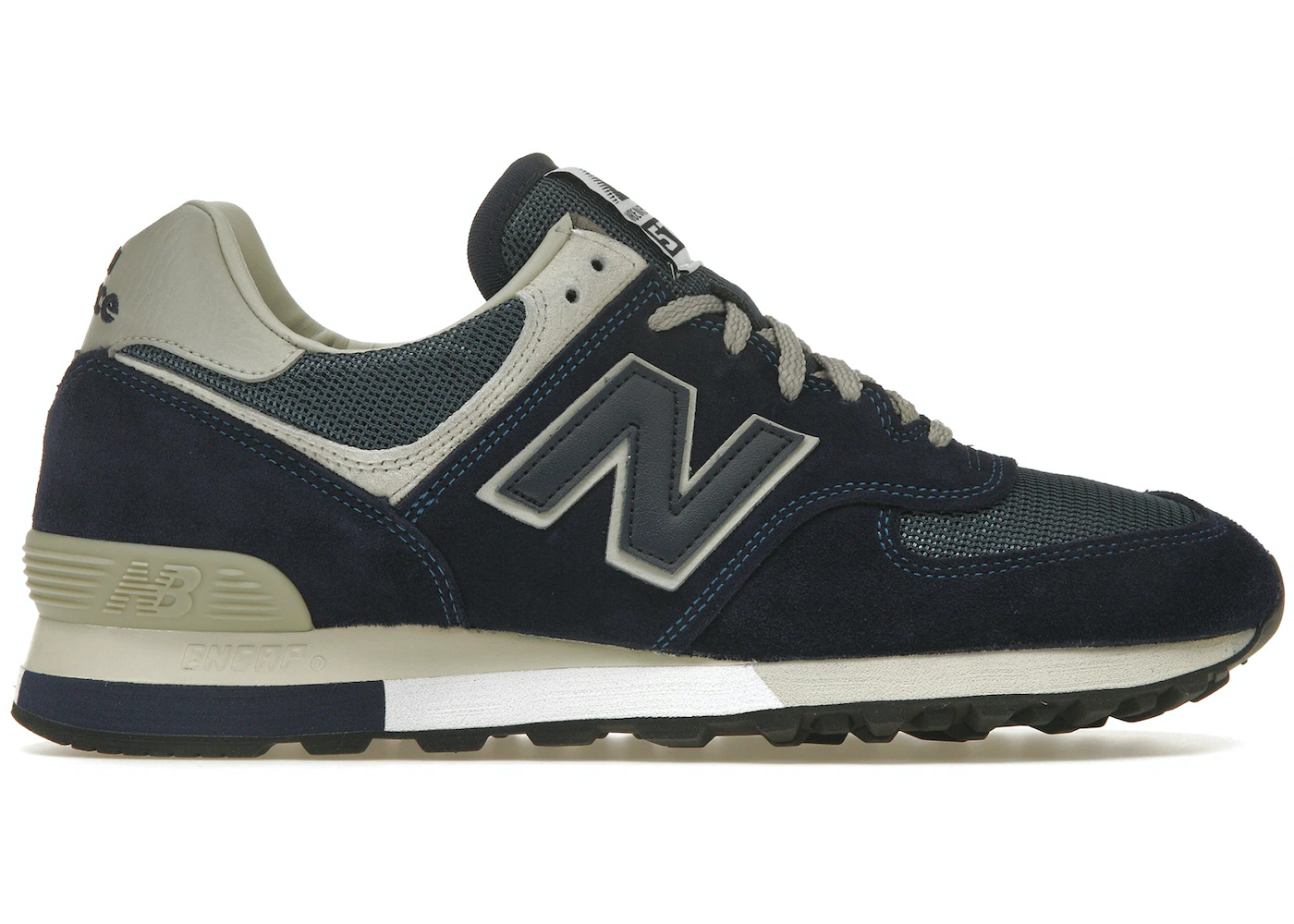
First Year Released: 1988
Where to Buy It: New Balance
This might be the most controversial ranking and blurb on the list. The 574 was the first New Balance sneaker for a lot of people. And for a while, it may have been the only New Balance sneaker for some people. And that was by design. The shoe had a prominent run in the 2000s thanks to retailers such as Foot Locker that sold them two for $89. It was an affordable shoe that you could wear with anything. But the die-hard collectors of the brand eschewed the 574, not just because it was cheap (price and material wise) but because it was a takedown version of the 576, a running sneaker designed by Steven Smith in 1988. The shoe was expensive, as were most New Balances, and was stripped to make the 574. Smith wasn’t involved in that process. And the 574 sort of became a New Balance that looked like the expensive New Balances but was kind of haphazardly thrown together. I talked to Smith years ago, and he described the 574 as the 576 sans its “expensive parts.” The 576 has had some cool versions over the years. Solebox did a Purple Devil version of it in 2006. Footpatrol did them in all leather. SNS has a few pairs, too. Recently, FY7 did a Tiffany-looking pair. The sneaker is now Made in the UK, and many of its projects are told through a European lens. The 574 has continued to kick on. The brand remastered the shoe in 2018, which was difficult for the brand, as it never had a real blueprint. There’s also been Made in USA 574s, which are more premium and have a better shape. One of the biggest legacies of the 574, though, is a bit of confusion with the brand and consumer. People who only knew New Balance through the 574 wore the brand because it was inexpensive. Most of the brand’s shoes, though, are quite pricey. So when the brand caught steam in the past few years, people were bewildered as to why the sneakers were now over $200, although that was nothing new. —Matt Welty
9. New Balance MT580
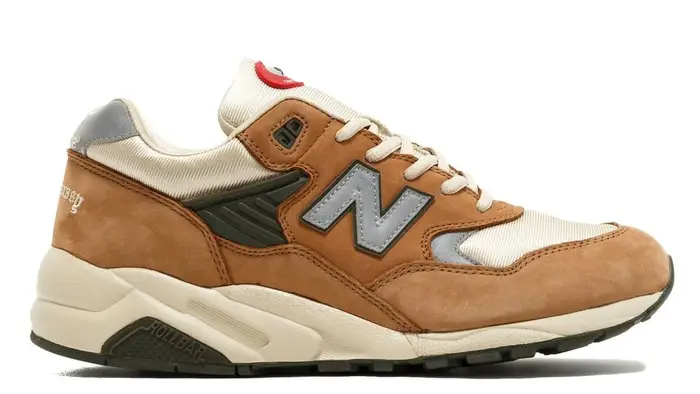
First Year Released: 1996
Where to Buy It: Ssense
The New Balance MT580 is one of the more confusing New Balance models in terms of provenance. The sneaker was first released in 1996, when New Balance Japan created it as a budget-friendly version of the American-made M585. It is distinct from the New Balance M580, another US-made shoe that made its debut in 1992. What does the MT580 have that those shoes don’t?
The MT580 was made legendary by a distinctly Japanese touch. The model, which was a regional exclusive for the first part of its life, was given new flair via rugged colors and material choices. Mita Sneakers, one of the country’s most tenured sneaker shops, turned the MT580 into a coveted shoe by remixing it endlessly with streetwear brands like Mad Hectic and Undefeated. The shoe has had its moments elsewhere, occasionally turning up in the US for hard-hitting collab moments. It’s one of those New Balances that the Japanese did best, a moment where we have to defer to their taste, which elevated a clunky, bargain-bin shoe into a mean silhouette with a stance that’s always felt forward-leaning. —Brendan Dunne
8. New Balance 998

First Year Released: 1993
Where to Buy It: New Balance
Freshly reissued this year, the New Balance 998 was originally released in 1993 and later became one of the brand’s most popular retro silhouettes during the 2010s. Collaborations like 2013’s Concepts “C-Note” and “Tannery,” along with a handful of popular J.Crew exclusives, made the model hot long before Instagram mood boards were a thing.
The 998 was notable for being the brand’s first shoe to use Abzorb cushioning, a technology developed in partnership with Dupont that New Balance still uses to this day on new and retro sneakers alike. It had a lot to live up to in the wake of the 997, which was one of designer Steven Smith’s last projects before leaving the company. Unlike the 997’s stiffer midsole, the use of Abzorb in the 998 gave the sneaker a cushier underfoot feel.
Now under the creative direction of Teddy Santis as part of New Balance’s Made in USA line, it will be interesting to see how the 998 fares with a new demographic of consumers. —Riley Jones
7. New Balance 1500

First Year Released: 1993
Where to Buy It: Bodega
There might have been a time where this was considered the number one New Balance sneaker ever. In the mid-2000s, the 1500 rose as the brand’s most coveted sneaker during the early days of its fledgling collaboration business. In fact, the shoe’s first collab happened way back in 1995 as a special makeup for retailer Just For Feet. And while the early collab landscape in the ‘90s is somewhat murky to pin down, many New Balance enthusiasts consider the Just For Feet 1500 to be the brand’s first-ever collaboration period. Designed by dad shoe guru Steven Smith in 1993, the 1500 quickly became one of the most visible running sneakers on the market, thanks to it being the footwear of choice for President Bill Clinton. Ten years later it found itself being reworked by European retailers such as Solebox, Sneakersnstuff, Hanon, and Crooked Tongues. All of those shoes still hold up, design wise, to this day. And they are some of the most cherished New Balance sneakers ever. Purple Devil 1500s. Chosen Few 1500s. Blackbeard 1500s. So good. New Balance also shifted the sneaker from Made in USA to Made in England, and some pairs have also been crafted in Asia. Maybe the sneaker has dropped down the brand’s ladder a bit in recent years, although the mismatched Paperboy and Beams pair was great, but it’s still one of the sneakers that put New Balance on the map in our little but growing world. —Matt Welty
6. New Balance 997

First Year Released: 1991
Where to Buy It: StockX
From Reebok to Yeezy, veteran footwear designer Steven Smith has left his mark on a number of brands, but his most impactful — and coincidentally, final — contribution at New Balance was the 997. Originally released in 1991, the sneaker featured the brand’s polyurethane Encap midsole with EVA inside for cushioning. Original ads for the shoe touted its availability in different widths, calling it a sneaker that “won’t punish you if your feet happen to be a little wider or narrower than others.” Like most models back then, New Balance made it for a few years and eventually discontinued production and moved on to the next thing.
But it had already grown a cult following, and after a few teasers in the form of the hybrid 997.5 in 2008 courtesy of United Arrows & Sons and again in 2011 in collaboration with Nonnative, the OG 997 finally made a comeback in 2014. It was rendered in (almost) all its original splendor: neutral-colored mesh and pigskin suede (led by grey, of course), the blocky Encap midsole, and a pebbled nubuck tongue. Despite the long-awaited comeback, the initial grey 997 (997GY) reissue left a few things to be desired by purists. The color tones were darker than the original pairs that collectors fondly remembered, something the brand attempted to correct with the 997GY2 follow-up. Later, more collaborations on the 997 would follow, with Concepts, Kith, and J.Crew adding hype to the sneaker’s return to shelves. And while the true-to-form OG isn’t currently part of New Balance’s lineup, the recent return of the 998 could spell a soon-to-come 997 revival. —Riley Jones
5. New Balance 990v4
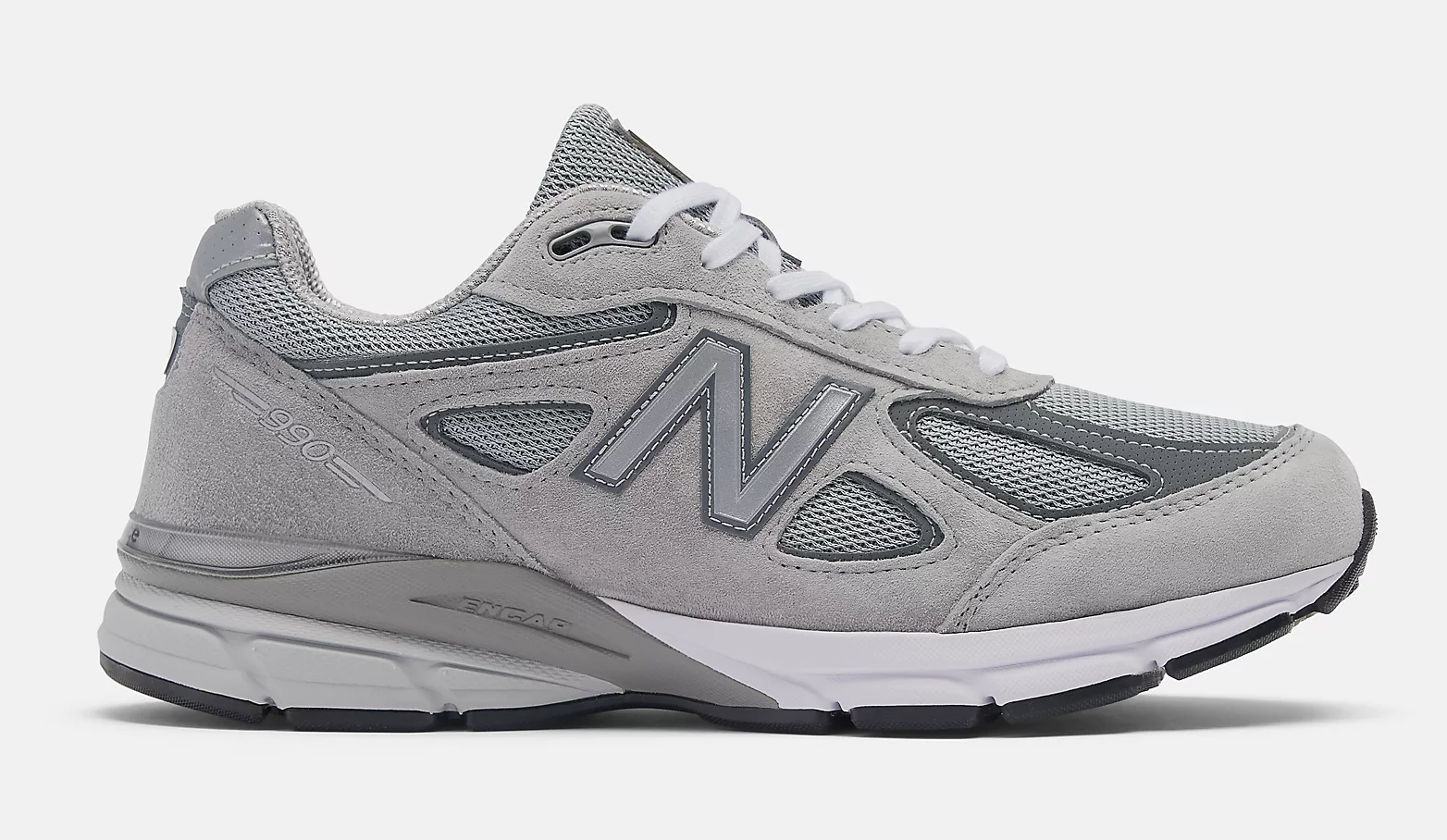
First Year Released: 2016
Where to Buy It: New Balance
Not quite as heralded as the 990v3, the 990v4 is still nothing to scoff at. That’s partly because the pairs are almost identical in design (if it ain’t broke, don’t fix it). Debuting in 2016, the 990v4 was a perfect addition to the lineage of the 990 series. Subtle tweaks included a slightly larger “N” logo, new branding on the tongue, and small adjustments to the placement of pig skin suede overlays. The Encap midsole remained intact, bolstered by EVA cushioning, but the 990v4 did remove the v3’s carbon fiber shank — perhaps as a cost-cutting method.
Of course, there is the signature grey colorway that you will still see plenty of people logging miles in to this day, especially in places like Philadelphia and Washington, D.C., where it has become a part of the local uniform. But don’t forget about the great collaborations over the years from the likes of Stüssy, Kith, L.L. Bean, DTLR, and more. More recently, the 990v4 has also been a focal point of Teddy Santis’ Made in USA program, with colorways ranging from striking purple hairy suede options to more minimal cream and tan pairs. There’s good reason that New Balance is making these to this day despite continuing to innovate the 990 series, now on its sixth installment. The 990v4 is just that good. —Mike DeStefano
4. New Balance 991
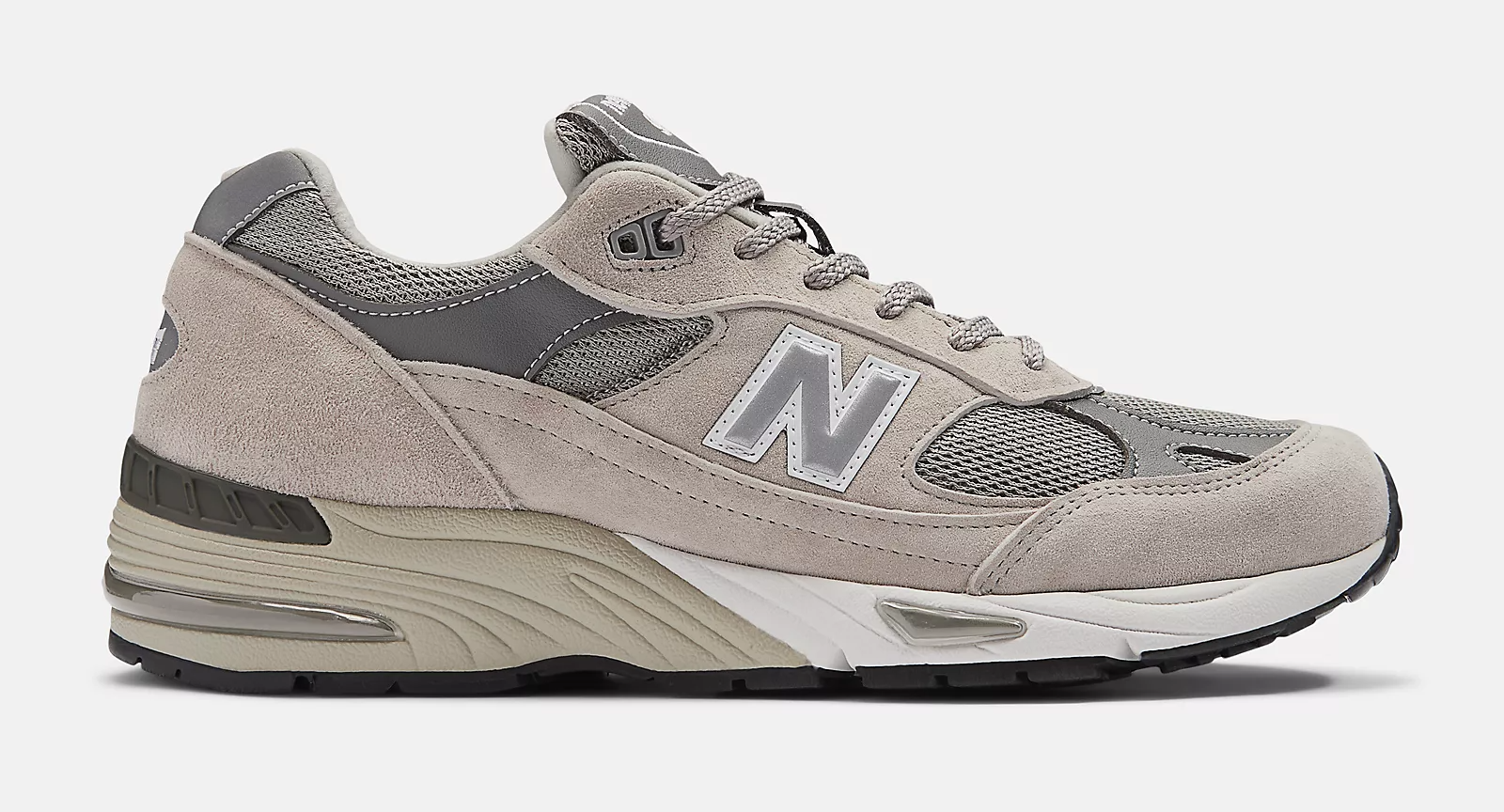
First Year Released: 2001
Where to Buy It: New Balance
The New Balance 991 might be the greatest New Balance sneaker of all time, depending on who you ask. I’ve heard a lot of people, whose opinion I respect on New Balance, say that in the past, so the sneaker holds a special place in the brand’s lineage. It’s a perfect thruway from the brand’s past and future. First released in 2001, the 991 falls after the 990v2 from 1998 and before the 992 in 2006. It has the chunky sole that would catch on in the later 900 series shoes, but it has a visible Abzorb bubble across the heel and on the forefoot of the midsole. The upper is similar to the 992, but subtly different. What separates the 991 from other 900 series sneakers, however, is that it’s a Made in England model, where it’s still made until this day. It’s worth mentioning that early on, the 991 was simultaneously made in America before the introduction of the 992. The 991 was worn by Steve Jobs in its original grey colorway. The first collaboration on the model was from the UK’s Crooked Tongues in 2006. In recent times it’s been reworked by Patta, JJJJound, Palace, Paperboy, Sneakersnstuff, Stray Rats, and Aimé Leon Dore. What’s great about the 991, though, is it’s not the collaborations that made the sneaker popular. It’s always stood on its own. —Matt Welty
3. New Balance 993
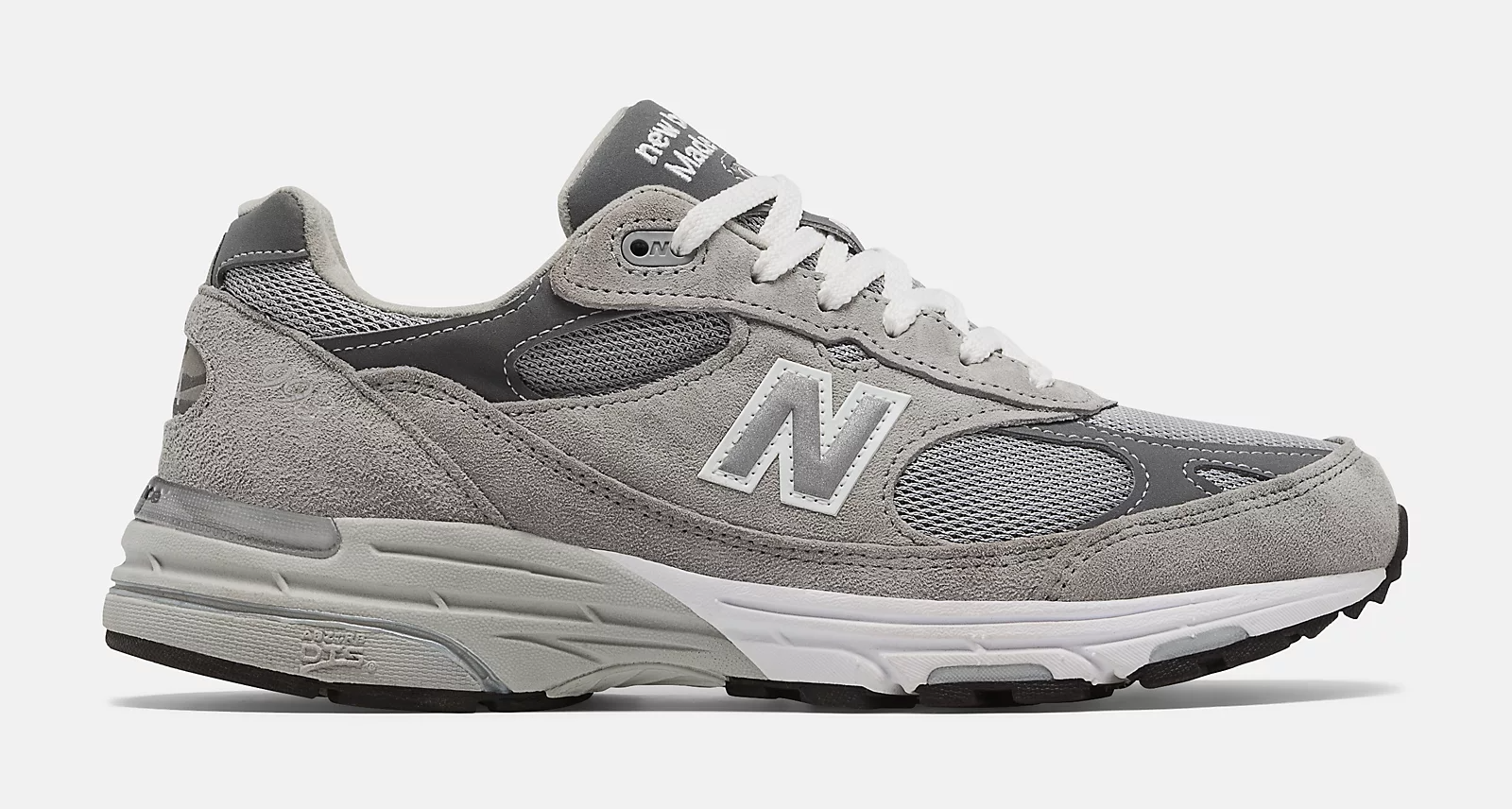
First Year Released: 2008
Where to Buy It: New Balance
If there’s big criticism to make of New Balance’s most popular sneakers, it’s that so many of them look so similar. It’s a fair take — look at the top end of this list, and you’ll notice that the shoes are less diverse than those that top, say, our rankings of the best Nikes ever. Look at them too many times and certain shoes blend into each other. But still, there are differences that separate even the most similar shoes, like the 992 and the 993, which represent the best of the brand’s silvery grey “Dad Shoe” runners.
The New Balance 993 released after, arriving in 2008. It’s got Abzorb DTS (that’s dynamic transitioning system) tech in the midsole, a slight upgrade from what was offered with the 992 from 2006. It’s a bit sleeker and slimmer than the 992 and features a cleaner toe-down look. It’s a little lacking in marquee colorways and, like so many New Balance shoes, looks the best in its original grey suede and mesh combination. The shoe is peak New Balance, an unassuming, comfortable runner that can look subtle on one person and sharp on the next. It doesn’t have the deep catalog of collaborations and special editions that recently buoyed the 992, but it’s still a masterful piece of NB design. —Brendan Dunne
2. New Balance 992
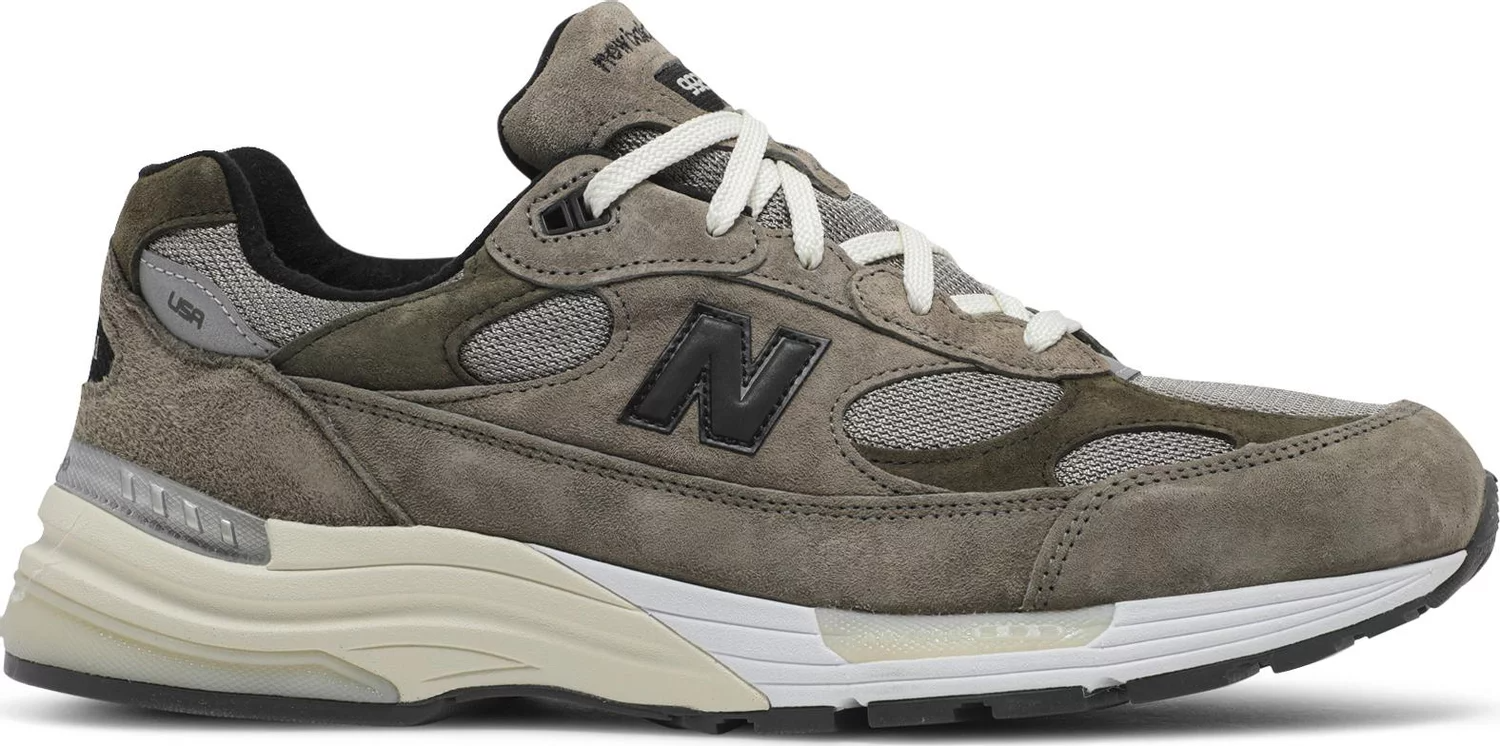
First Year Released: 2006
Where to Buy It: StockX
It’s hard to consider something a top-notch New Balance model if it was never worn by Steve Jobs or Adam Sandler. The New Balance 992 was sported by both of those legends. The 992 launched in 2006 to commemorate the brand’s 100th anniversary. The sneaker stayed on the market for four years and was discontinued in 2010 for the 993. It’s the right balance of chunky and sporty. The midsole is considerably thicker looking than the 993. I’ve always thought the heel had a horse-hoof-ish element to it. It’s also one of the sneakers that helped introduce New Balance to a new audience when it was re-released in 2020. It was how the world first found out about Joe Freshgoods’ view of New Balance, and that opened up so many people to the company. Then there was hit after hit. Packer Shoes, WTAPS, FY7, JJJJound, Kith, Levi’s. There was even a pair that unofficially referenced Steve Jobs and Apple. Who could forget the purple pair, too, that gave our co-worker Joe La Puma the New Balance bug? I remember wanting the 992 so bad when it first came out, and we were selling it at Foot Locker but they didn’t have my size. I never thought it would come back, so when it did, it felt like New Balance was really onto something. It’s almost like Steve Jobs was onto something. —Matt Welty
1. New Balance 990v3

First Year Released: 2012
Where to Buy It: StockX
The 990v3 isn’t quite New Balance’s equivalent of the ubiquitous Nike Air Force 1 (that distinction would go to the 574, a model found in nearly every shoe store in America, instead), but it’s close. Originally released in 2012 to mark the 990’s 20th anniversary, the 990v3 marked a distinct shift in the 990 series that continues to inspire its look to this day with the newest iteration, the 990v6.
The 990v3 was created by Andrew Nyssen, a designer who began with New Balance in 2003 and has been working in the performance running category since 2010. In 2012, he created just that: a modern runner meant for logging miles, not getting fits off. But in a short time, the 990v3 grew into something bigger in large part to its embrace by communities in D.C. and Maryland. There, the shoe’s staple grey colorway was worn completely the opposite way Nyssen had intended. Rather than tightening the laces for lockdown, they were worn loosely — often untied altogether and left to dangle at the uppermost eyelet. Instead of running shorts, the 990v3 was worn with jeans and Helly Hansen jackets, co-opted for lounging over sweating.
In 2016, New Balance would move on to the strikingly similar 990v4, but the v3’s mark had been made. Not only did the new 990v4 look a lot like its predecessor, but it also kept many of the same components, including an Encap midsole and pigskin suede uppers. The look continued to evolve on 2019’s 990v5, which stuck with the v3’s overall shape and build but made a few modernized adjustments. Traits of the original v3 can even be seen on the newest version, the 990v6, which debuted in late 2022 and is continuing to roll out now.
While the grey, black, and navy New Balance 990v3 colorways will always be staples, the sneaker has seen its share of sought-after collaborations and limited releases including projects with Joe Freshgoods, JJJJound, Kith, and Stray Rats. —Riley Jones
SHARE THIS STORY
